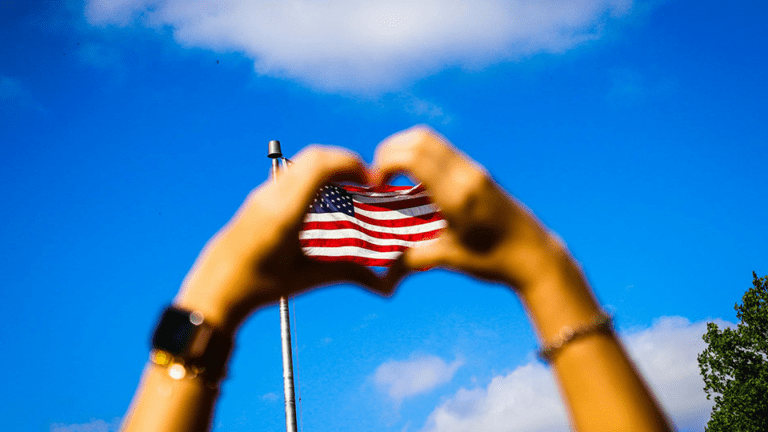By RJ Youngblood
Kansas State University
Book Information
When We Fight, We Win!: Twenty-First-Century Social Movements and the Activists That Are Transforming Our World. By Greg Jobin-Leeds and AgitArte. New York: The New Press. 2016. ISBN: 978-1-62097-093-5. 186 pp. Paperback, $17.95.
Keywords
civic engagement
DOI
10.21768/ejopa.v6i1.145
Author Note
R. J. Youngblood, Academic Assistance Center, Kansas State University.
Correspondence regarding this article should be directed to
R. J. Youngblood
Assistant Director
Academic Assistance Center
Kansas State University
Mid Campus Drive N.
Manhattan, KS 66506
[wp-svg-icons icon=”phone” wrap=”i”] (785) 532-6492
[wp-svg-icons icon=”envelop” wrap=”i”] youngblood@ksu.edu
“How do we create real change? What have successful organizers done that works, and what doesn’t work? How can anyone get involved and make a difference?” In When We Fight, We Win!: Twenty-First Century Social Movements and the Activists That Are Transforming Our World, co-author Greg Jobin-Leeds poses these powerful questions to frame an exploration of 21st -century social movements and to spotlight the often unsung individuals who work to effect change. By interviewing activists, leaders, organizers, and academics, Jobin-Leeds and AgitArte—an activist artist collective—situate contemporary movements by artistically representing and sharing stories tied to the history of struggle, building on ideas and visions of previous generations, and writing candidly of victories, failures, and dreams. The book serves simultaneously as a guide offering tips to current or aspiring activists, an informative and inclusive history of grassroots movements, and a vivid depiction of individual stories and experiences centering on transformative organizing.
Marriage equality, the Black Lives Matter network, the DREAM Act, Occupy-inspired activism, and the People’s Climate March are just some of the revolutionary contemporary movements highlighted throughout When We Fight, We Win!. The book chapters and epilogue are organized around seven attributes of transformative organizing which arose from Jobin-Leeds’ conversations with organizers: (1) building organizations grounded in impacted communities, (2) creating transformative visions, (3) telling powerful stories, (4) getting to root causes, (5) reclaiming intersections of identities and struggles, (6) disrupting power, and (7) building solidarity. Even though the authors organize stories and movements around these specific themes, they often explore issues further across multiple chapters. For example, one chapter that examines environmental justice also delves deeply into issues of race, class, and gender. In doing so, the authors integrate layers of meaning in nuanced ways. This format recognizes the role intersectionality plays in understanding complex systems and the action required to effect change. Jobin-Leeds weaves facts about social movements with storytelling and images, producing descriptions of victories and changes resulting from these movements in tandem with the real perspectives, feelings, and histories of those intimately involved in the process. Each chapter includes observations and insights from activists about practices, partnerships, and personal characteristics required for movement building and highlights essential conversations with artists, musicians, and cultural organizers whose creative expressions have strengthened the impact of movements. These stories illuminate the role of ongoing transformative and political artistic practices.
When We Fight, We Win! is co-authored through the vision and research of Jobin-Leeds in dynamic partnership with AgitArte. Jobin-Leeds is the founder and board co-chair of the Schott Foundation for Public Education, which works to provide opportunities and enhance quality in public education by uniting educators and organizers to advocate for systemic educational change on local, state, and national platforms. His experiences as a change agent have also informed his work as a developer and nurturer of many social justice organizations. AgitArte is a group of artists who practice cultural solidarity by using art to support the development and education of marginalized communities and grassroots movements. When We Fight, We Win! represents a unique project in the explicit collaboration of voices, talents, and visions to create a meaningful resource. This shared authorship recognizes the many voices needed to create a more equitable world.
When We Fight, We Win! is informed by the belief that transformative organizing is necessary for lasting and impactful change. As such, the book highlights storytelling as an essential component of systemic change because of its ability to link systems of oppression and build solidarity among movements, individuals, and the values they hold. Within transformative organizing, a shift in perspective occurs from individual experiences to the interconnectedness of a group. Connecting people through stories strengthens a shared understanding of how individuals collaborate toward systemic change and inspires continued efforts, insights, and understandings of what kind of change is possible. These intersections are further enhanced by the authors’ explicit commitment to sharing diverse perspectives through artistic media. The role that art and cultural organizing play in the vision for social movements is essential to the concept and format of the book as a foundation for unique collaboration and storytelling.
A primary strength of When We Fight, We Win! is its innovative format, comprising a plurality of voices and representations of ways of being and understanding the world. Creative explorations in connection with vivid stories challenge how readers understand and receive information in ways that engage and expand their understanding of what it means to contribute toward social progress. In this vein, the book represents movements as they are happening in explicit and authentic ways through the connective practice of storytelling. It brings to the center diverse voices, with all of their failures, moments of growth, and successes toward BOOK REVIEW: WHEN WE FIGHT, WE WIN! eJournal of Public Affairs, 6(1) 130 systemic change, through direct visual representations that reinforce possibilities in expressive detail.
While the book embraces an exciting format, a clearer delineation of audience might have strengthened its impact. In some ways, however, this ambiguity represents the diversity of social change agents—that is, there is no single model for those who wish to do the difficult work of changing the world. Even so, the primary message of the book feels, at times, diluted or obscured in its attempt to communicate its message to multiple audiences.
In the context of higher education, When We Fight We Win! can help to fill a gap within programs focused on civic engagement, community membership, intercultural humility, and leadership development. As an academic professional and instructor in first-year experience programs, I recommend this book as a wonderful addition to connection classes, common reading programs, and course texts that include civic engagement themes as ways for students to connect with those organizing transformative change. The content and structure of the book can frame the ways students think about civic responsibility and engage each other to work collaboratively. In the stories the book shares, the many voices that are presented, and in the unique collaborative and artistic format of the book, readers will find in When We Fight, We Win! a clear reminder that true, lasting, and impactful change can only happen when people work together to fight against systemic injustices and that envisioning a better world is possible when individuals unite.
References
Zlotkowski, E. (1995). Does service-learning have a future? Michigan Journal of Community Service Learning, 2(1), 123-133.
Author Biography
 R.J. Youngblood is the Assistant Director of the Academic Assistance Center and an instructor with English and firstyear programs at Kansas State University. She holds a B.A. in English from the University of Central Florida and an M.A. in English from Florida Gulf Coast University. In addition to roles in higher education, she has had careers in clinical research for retinal diseases, architecture, and technology. Because of her experiences as a first generation college student, her role in academic success is grounded in a commitment to making equitable spaces for student learning, and her research interests include inclusive tutoring and pedagogy practices for first-year and non-traditional student success. She works to produce forms of community-engaged scholarship that advocates and empowers young girls and women to participate more fully in civic life.
R.J. Youngblood is the Assistant Director of the Academic Assistance Center and an instructor with English and firstyear programs at Kansas State University. She holds a B.A. in English from the University of Central Florida and an M.A. in English from Florida Gulf Coast University. In addition to roles in higher education, she has had careers in clinical research for retinal diseases, architecture, and technology. Because of her experiences as a first generation college student, her role in academic success is grounded in a commitment to making equitable spaces for student learning, and her research interests include inclusive tutoring and pedagogy practices for first-year and non-traditional student success. She works to produce forms of community-engaged scholarship that advocates and empowers young girls and women to participate more fully in civic life.


